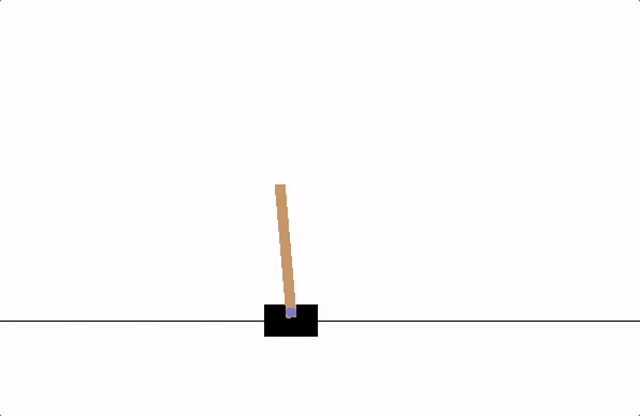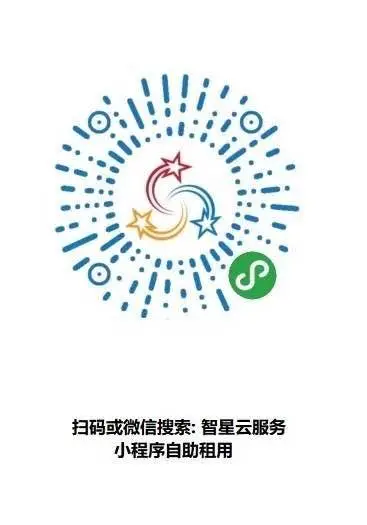本教程显示了如何使用PyTorch在OpenAI Gym的CartPole-v0任务上训练深度Q学习(DQN)agent。
agent必须在两个动作之间做出决定-向左或向右移动推车-以便使与之相连的电线杆保持直立。您可以在Gym网站上找到具有各种算法和可视化效果的官方排行榜 。

cartpole
当代理观察环境的当前状态并选择一个动作时,环境会转换为新状态,并返回指示该动作后果的奖励。在此任务中,每增加一个时间步长,奖励为+1,并且如果杆子掉落得太远或手推车离中心的距离超过2.4个单位,则环境终止。这意味着性能更好的方案将持续更长的时间,从而积累更大的回报。
设计CartPole任务的目的是使对代理的输入是代表环境状态(位置,速度等)的4个实际值。但是,神经网络可以仅通过查看场景来解决任务,因此我们将使用以购物车为中心的一部分屏幕作为输入。因此,我们的结果无法直接与官方排行榜上的结果进行比较-我们的任务要艰巨得多。不幸的是,这确实减慢了训练速度,因为我们必须渲染所有框架。
严格来说,我们将状态显示为当前屏幕补丁与前一个屏幕补丁之间的差异。这将允许代理从一张图像考虑极点的速度。
Packages
首先,让我们导入所需的软件包。首先,我们需要 适用于环境的gym(使用pip install gym安装)。我们还将使用PyTorch中的以下内容:
- 神经网络(
torch.nn) - 优化(
torch.optim) - 自动区分(
torch.autograd) - 视觉任务的实用程序(
torchvision- a separate package)。
import gymimport mathimport randomimport numpy as npimport matplotlibimport matplotlib.pyplot as pltfrom collections import namedtuplefrom itertools import countfrom PIL import Imageimport torchimport torch.nn as nnimport torch.optim as optimimport torch.nn.functional as Fimport torchvision.transforms as Tenv = gym.make('CartPole-v0').unwrapped# set up matplotlibis_ipython = 'inline' in matplotlib.get_backend()if is_ipython: from IPython import displayplt.ion()# if gpu is to be useddevice = torch.device("cuda" if torch.cuda.is_available() else "cpu")
Replay Memory
我们将使用经验重播记忆来训练我们的DQN。它存储代理观察到的转换,使我们以后可以重用此数据。通过从中随机抽样,可以建立批处理的转换相关。已经表明,这极大地稳定并改善了DQN训练程序。
为此,我们将需要两个类:
Transition-一个命名的元组,表示我们环境中的单个过渡。它本质上将(状态,动作)对映射到其(next_state,奖励)结果,状态是屏幕差异图像,如下所述。ReplayMemory-有限大小的循环缓冲区,用于保存最近观察到的过渡。它还实现了.sample()一种用于选择随机过渡批次进行训练的方法。
Transition = namedtuple('Transition', ('state', 'action', 'next_state', 'reward'))class ReplayMemory(object):def __init__(self, capacity):self.capacity = capacityself.memory = []self.position = 0def push(self, *args):"""Saves a transition."""if len(self.memory) < self.capacity:self.memory.append(None)self.memory[self.position] = Transition(*args)self.position = (self.position + 1) % self.capacitydef sample(self, batch_size):return random.sample(self.memory, batch_size)def __len__(self):return len(self.memory)
现在,让我们定义模型。但是首先,让我们快速回顾一下DQN是什么。
Q-network
我们的模型将是一个卷积神经网络,该卷积神经网络将吸收当前屏幕补丁和先前屏幕补丁之间的差异。它有两个输出,分别代表Q(s,left)
Q(s,left) 和 Q(s,right)
Q(s,right) (哪里 s
s是网络的输入)。实际上,网络正在尝试预测在给定当前输入的情况下采取每个操作的预期收益。
class DQN(nn.Module): def __init__(self, h, w, outputs):super(DQN, self).__init__()self.conv1 = nn.Conv2d(3, 16, kernel_size=5, stride=2)self.bn1 = nn.BatchNorm2d(16)self.conv2 = nn.Conv2d(16, 32, kernel_size=5, stride=2)self.bn2 = nn.BatchNorm2d(32)self.conv3 = nn.Conv2d(32, 32, kernel_size=5, stride=2)self.bn3 = nn.BatchNorm2d(32)# Number of Linear input connections depends on output of conv2d layers# and therefore the input image size, so compute it. def conv2d_size_out(size, kernel_size = 5, stride = 2):return (size - (kernel_size - 1) - 1) // stride + 1 convw = conv2d_size_out(conv2d_size_out(conv2d_size_out(w))) convh = conv2d_size_out(conv2d_size_out(conv2d_size_out(h))) linear_input_size = convw * convh * 32self.head = nn.Linear(linear_input_size, outputs)# Called with either one element to determine next action, or a batch# during optimization. Returns tensor([[left0exp,right0exp]...]). def forward(self, x): x = F.relu(self.bn1(self.conv1(x))) x = F.relu(self.bn2(self.conv2(x))) x = F.relu(self.bn3(self.conv3(x)))return self.head(x.view(x.size(0), -1))
Input extraction
以下代码是用于从环境中提取和处理渲染图像的实用程序。它使用该torchvision程序包,可以轻松组成图像变换。一旦运行单元,它将显示提取的示例补丁。
resize = T.Compose([T.ToPILImage(),T.Resize(40, interpolation=Image.CUBIC),T.ToTensor()])def get_cart_location(screen_width):world_width = env.x_threshold * 2scale = screen_width / world_widthreturn int(env.state[0] * scale + screen_width / 2.0) # MIDDLE OF CARTdef get_screen(): # Returned screen requested by gym is 400x600x3, but is sometimes larger # such as 800x1200x3. Transpose it into torch order (CHW).screen = env.render(mode='rgb_array').transpose((2, 0, 1)) # Cart is in the lower half, so strip off the top and bottom of the screen_, screen_height, screen_width = screen.shapescreen = screen[:, int(screen_height*0.4):int(screen_height * 0.8)]view_width = int(screen_width * 0.6)cart_location = get_cart_location(screen_width)if cart_location < view_width // 2:slice_range = slice(view_width)elif cart_location > (screen_width - view_width // 2):slice_range = slice(-view_width, None)else:slice_range = slice(cart_location - view_width // 2,cart_location + view_width // 2) # Strip off the edges, so that we have a square image centered on a cartscreen = screen[:, :, slice_range] # Convert to float, rescale, convert to torch tensor # (this doesn't require a copy)screen = np.ascontiguousarray(screen, dtype=np.float32) / 255screen = torch.from_numpy(screen) # Resize, and add a batch dimension (BCHW)return resize(screen).unsqueeze(0).to(device)env.reset()plt.figure()plt.imshow(get_screen().cpu().squeeze(0).permute(1, 2, 0).numpy(),interpolation='none')plt.title('Example extracted screen')plt.show()
Training
Hyperparameters and utilities
该单元实例化我们的模型及其优化器,并定义一些实用程序:
select_action-将根据epsilon贪婪策略选择一个动作。简而言之,我们有时会使用模型来选择动作,有时我们会统一采样。选择随机动作的概率始于EPS_START并将朝指数衰减EPS_END。EPS_DECAY控制衰减率。plot_durations-绘制情节持续时间以及最近100个情节的平均值的官方助手(官方评估中使用的度量)。该情节将在包含主要训练循环的单元格下方,并且将在每个情节之后更新。
BATCH_SIZE = 128
GAMMA = 0.999
EPS_START = 0.9
EPS_END = 0.05
EPS_DECAY = 200
TARGET_UPDATE = 10
# Get screen size so that we can initialize layers correctly based on shape
# returned from AI gym. Typical dimensions at this point are close to 3x40x90
# which is the result of a clamped and down-scaled render buffer in get_screen()
init_screen = get_screen()
_, _, screen_height, screen_width = init_screen.shape
# Get number of actions from gym action space
n_actions = env.action_space.n
policy_net = DQN(screen_height, screen_width, n_actions).to(device)
target_net = DQN(screen_height, screen_width, n_actions).to(device)
target_net.load_state_dict(policy_net.state_dict())
target_net.eval()
optimizer = optim.RMSprop(policy_net.parameters())
memory = ReplayMemory(10000)
steps_done = 0
def select_action(state):
global steps_done
sample = random.random()
eps_threshold = EPS_END + (EPS_START - EPS_END) * \
math.exp(-1. * steps_done / EPS_DECAY)
steps_done += 1
if sample > eps_threshold:
with torch.no_grad():
# t.max(1) will return largest column value of each row.
# second column on max result is index of where max element was
# found, so we pick action with the larger expected reward.
return policy_net(state).max(1)[1].view(1, 1)
else:
return torch.tensor([[random.randrange(n_actions)]], device=device, dtype=torch.long)
episode_durations = []
def plot_durations():
plt.figure(2)
plt.clf()
durations_t = torch.tensor(episode_durations, dtype=torch.float)
plt.title('Training...')
plt.xlabel('Episode')
plt.ylabel('Duration')
plt.plot(durations_t.numpy())
# Take 100 episode averages and plot them too
if len(durations_t) >= 100:
means = durations_t.unfold(0, 100, 1).mean(1).view(-1)
means = torch.cat((torch.zeros(99), means))
plt.plot(means.numpy())
plt.pause(0.001) # pause a bit so that plots are updated
if is_ipython:
display.clear_output(wait=True)
display.display(plt.gcf())
Training loop
最后,是训练模型的代码。
在这里,你可以找到一个optimize_model执行最优化的单步功能。首先对一批进行采样,将所有张量连接成一个张量,然后计算Q(s
t
,a
t
)
Q(st,at) 和 V(s
t+1
)=max
a
Q(s
t+1
,a)
V(st+1)=maxaQ(st+1,a),并将它们合并到我们的损失中。通过定义我们设定V(s)=0
V(s)=0 如果 s
s是终端状态。我们还使用目标网络进行计算V(s
t+1
)
V(st+1)为了增加稳定性。目标网络的权重大部分时间保持冻结状态,但经常使用策略网络的权重进行更新。通常这是一组固定的步骤,但是为了简单起见,我们将使用情节。
def optimize_model():
if len(memory) < BATCH_SIZE:
return
transitions = memory.sample(BATCH_SIZE)
# Transpose the batch (see https://stackoverflow.com/a/19343/3343043 for
# detailed explanation). This converts batch-array of Transitions
# to Transition of batch-arrays.
batch = Transition(*zip(*transitions))
# Compute a mask of non-final states and concatenate the batch elements
# (a final state would've been the one after which simulation ended)
non_final_mask = torch.tensor(tuple(map(lambda s: s is not None,
batch.next_state)), device=device, dtype=torch.bool)
non_final_next_states = torch.cat([s for s in batch.next_state
if s is not None])
state_batch = torch.cat(batch.state)
action_batch = torch.cat(batch.action)
reward_batch = torch.cat(batch.reward)
# Compute Q(s_t, a) - the model computes Q(s_t), then we select the
# columns of actions taken. These are the actions which would've been taken
# for each batch state according to policy_net
state_action_values = policy_net(state_batch).gather(1, action_batch)
# Compute V(s_{t+1}) for all next states.
# Expected values of actions for non_final_next_states are computed based
# on the "older" target_net; selecting their best reward with max(1)[0].
# This is merged based on the mask, such that we'll have either the expected
# state value or 0 in case the state was final.
next_state_values = torch.zeros(BATCH_SIZE, device=device)
next_state_values[non_final_mask] = target_net(non_final_next_states).max(1)[0].detach()
# Compute the expected Q values
expected_state_action_values = (next_state_values * GAMMA) + reward_batch
# Compute Huber loss
loss = F.smooth_l1_loss(state_action_values, expected_state_action_values.unsqueeze(1))
# Optimize the model
optimizer.zero_grad()
loss.backward()
for param in policy_net.parameters():
param.grad.data.clamp_(-1, 1)
optimizer.step()
在下面,您可以找到主要的训练循环。首先,我们重置环境并初始化stateTensor。然后,我们对一个动作进行采样,执行它,观察下一个屏幕和奖励(总是1),并一次优化我们的模型。当情节结束时(我们的模型失败),我们重新开始循环。
下面,将num_episodes设置为较小。您应该下载笔记本并运行更多的片段,例如300多个片段,才能显着改善持续时间。
num_episodes = 50
for i_episode in range(num_episodes):
# Initialize the environment and state
env.reset()
last_screen = get_screen()
current_screen = get_screen()
state = current_screen - last_screen
for t in count():
# Select and perform an action
action = select_action(state)
_, reward, done, _ = env.step(action.item())
reward = torch.tensor([reward], device=device)
# Observe new state
last_screen = current_screen
current_screen = get_screen()
if not done:
next_state = current_screen - last_screen
else:
next_state = None
# Store the transition in memory
memory.push(state, action, next_state, reward)
# Move to the next state
state = next_state
# Perform one step of the optimization (on the target network)
optimize_model()
if done:
episode_durations.append(t + 1)
plot_durations()
break
# Update the target network, copying all weights and biases in DQN
if i_episode % TARGET_UPDATE == 0:
target_net.load_state_dict(policy_net.state_dict())
print('Complete')
env.render()
env.close()
plt.ioff()
plt.sho
这是说明总体结果数据流的图

可以随机选择或根据策略选择动作,从健身环境中获取下一步样本。我们将结果记录在重播内存中,并在每次迭代时运行优化步骤。优化会从重播内存中随机抽取一批来训练新策略。优化中还使用了“较旧”的target_net来计算期望的Q值;有时会对其进行更新以使其保持最新状态。
接下来,给大家介绍一下租用GPU做实验的方法,我们是在智星云租用的GPU,使用体验很好。具体大家可以参考:智星云官网: http://www.ai-galaxy.cn/,淘宝店:https://shop36573300.taobao.com/公众号: 智星AI






















 138
138











 被折叠的 条评论
为什么被折叠?
被折叠的 条评论
为什么被折叠?








